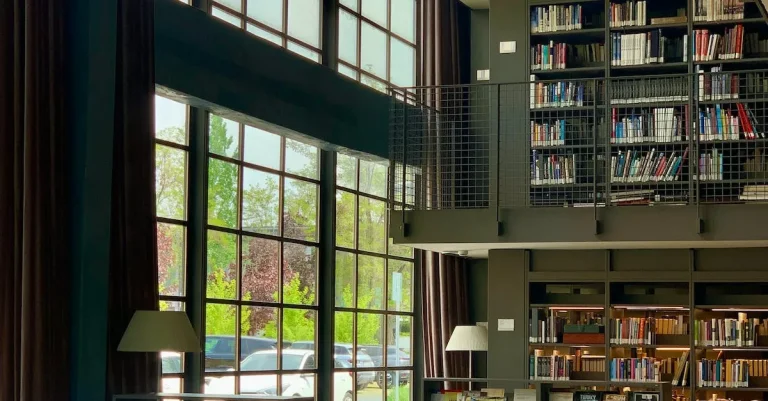Is Cat 8 Ethernet Cable Worth It In 2023?
With internet speeds constantly increasing, you may be wondering if it’s time to upgrade your Ethernet cables to the latest Cat 8 standard.
Cat 8 cables boast speeds up to 2,000 Mbps and seem future-proof – but are they worth the investment today?
If you’re short on time, here’s a quick answer: for most home and small business users, Cat 8 is overkill.
Cat 6 or Cat 6a will handle speeds up to 10 Gbps, which is more than enough for the vast majority of applications.
However, if you need to future-proof for networks over 10 Gbps, Cat 8 may be worth considering.
What is Cat 8 Ethernet Cable?
Cat 8 Ethernet cable, also known as Category 8 cable, is the latest and most advanced type of Ethernet cable available in the market.
It is designed to provide incredibly fast and reliable internet connectivity for both residential and commercial use.
Cat 8 cables are backward compatible with previous Ethernet standards, such as Cat 7, Cat 6, and so on, but they offer significantly higher performance and bandwidth capabilities.
Cat 8 overview and key specs
Cat 8 cables are known for their impressive speed and bandwidth capabilities. They can support data transfer speeds of up to 40 Gbps (gigabits per second) over distances of up to 30 meters.
This makes them ideal for high-bandwidth applications, such as data centers, server rooms, and gaming setups that require fast and reliable internet connections.
One key feature of Cat 8 cables is their shielding. They are equipped with better shielding than previous
Ethernet cable standards, which helps to minimize electromagnetic interference and crosstalk.
This shielding ensures that the signal remains strong and stable, even in environments with high levels of electrical noise.
Another important aspect of Cat 8 cables is their connector type.
They use the RJ45 connector, which is the same connector used by previous Ethernet cable standards. This means that you can easily connect Cat 8 cables to existing devices that have an RJ45 port.
Use cases where Cat 8 shines
Cat 8 Ethernet cables are particularly beneficial in scenarios where high-speed and reliable internet connectivity is crucial. Here are a few use cases where Cat 8 cables shine:
- Data centers: Cat 8 cables can handle the high bandwidth demands of data centers, allowing for efficient data transfer and minimal latency.
- Server rooms: Cat 8 cables provide fast and stable connections between servers, ensuring smooth communication and data transfer within the network.
- Gaming setups: Gamers can benefit from the low latency and high bandwidth capabilities of Cat 8 cables, resulting in a smoother gaming experience with reduced lag.
- Video streaming: Cat 8 cables can handle large amounts of data, making them ideal for streaming high-definition videos or transferring large files quickly and efficiently.
Cat 8 vs. Cat 6/6a/7 Ethernet Cables
Speed comparison
When it comes to speed, Cat 8 Ethernet cables outperform Cat 6, Cat 6a, and Cat 7 cables.
Cat 8 cables are designed to support bandwidths of up to 40Gbps, making them ideal for high-speed internet connections, data centers, and gaming setups that require ultra-fast and reliable connections.
On the other hand, Cat 6/6a/7 cables are limited to lower bandwidths, with Cat 6 supporting up to 10Gbps, Cat 6a up to 10Gbps or 25Gbps, and Cat 7 up to 10Gbps or 40Gbps depending on the cable type.
Cable quality and interference protection
Cat 8 cables are built with superior quality materials and advanced shielding techniques to minimize interference and crosstalk.
They are constructed with individual shielding for each pair of wires, as well as an overall shielding for the entire cable.
This ensures a stable and reliable connection, even in environments with high levels of electrical noise.
In comparison, Cat 6/6a/7 cables also offer some level of shielding, but they may not provide the same level of protection against interference as Cat 8 cables.
Cost comparison
It’s important to consider the cost when choosing between Cat 8 and Cat 6/6a/7 cables.
Cat 8 cables tend to be more expensive than their predecessors due to their advanced technology and higher performance capabilities.
However, the price difference may be worth it for those who require the fastest and most reliable internet connections.
On the other hand, Cat 6/6a/7 cables are more affordable options that still offer decent speeds and performance for most household and small business needs.
Ultimately, the choice between Cat 8 and Cat 6/6a/7 Ethernet cables depends on your specific requirements and budget.
If you need the fastest speeds and highest level of interference protection, Cat 8 cables are worth considering.
However, if you have more modest needs and want to save some money, Cat 6/6a/7 cables can still provide satisfactory performance.
When Does Cat 8 Make Sense?
For networks over 10Gbps
One of the main reasons why Cat 8 Ethernet cable makes sense is for networks that require speeds over 10Gbps.
The Cat 8 standard supports data transfer rates of up to 40Gbps, making it ideal for high-performance applications such as data centers, server rooms, and gaming setups.
If you have a network that demands ultra-fast speeds and low latency, investing in Cat 8 cable can greatly enhance your network performance.
For future-proofing bandwidth needs
With the increasing demand for high-speed internet and the rise of bandwidth-intensive applications, future-proofing your network infrastructure has become crucial.
Cat 8 Ethernet cable provides the necessary bandwidth to accommodate future advancements in technology.
By investing in Cat 8 now, you can ensure that your network will be able to handle the demands of tomorrow’s applications and avoid the need for costly upgrades down the line.
For runs over 100 meters
Another situation where Cat 8 Ethernet cable is worth considering is for runs over 100 meters.
Cat 8 cable has superior shielding capabilities compared to lower categories, which allows it to maintain signal integrity over longer distances.
This makes it suitable for large buildings, industrial settings, or installations where the cable needs to be routed through walls or ceilings.
If you have a network that requires long cable runs, Cat 8 can provide the reliability and performance you need.
Downsides of Using Cat 8 Cable
More expensive than lower Cat levels
One of the downsides of using Cat 8 Ethernet cable is its price. Compared to lower Cat levels such as Cat 5e or Cat 6, Cat 8 cables are generally more expensive.
The higher cost is attributed to the advanced technology and materials used in manufacturing Cat 8 cables.
While the cost may be justified for certain specific applications, it may not be necessary for most home and small business uses.
Backwards compatibility issues
Another drawback of Cat 8 Ethernet cables is the issue of backwards compatibility.
These cables are designed to support higher bandwidths and faster data transfer speeds, which means they may not work effectively with older devices or network equipment that are not compatible with Cat 8 standards.
It is important to consider the compatibility of your existing devices and network infrastructure before investing in Cat 8 cables.
Overkill for most home and small business uses
While Cat 8 cables offer impressive performance capabilities, they may be considered overkill for most home and small business uses.
Unless you have specific requirements for ultra-high-speed data transfer or have a network infrastructure that can fully utilize the capabilities of Cat 8 cables, you may not experience significant benefits by upgrading to Cat 8.
In such cases, opting for lower Cat levels such as Cat 6 or Cat 7 may be more cost-effective and practical.
Ultimately, the decision to use Cat 8 Ethernet cable depends on your specific needs and budget.
If you require the highest possible speeds and have the necessary compatible devices and infrastructure, Cat 8 can provide a future-proof solution.
However, for most average users, lower Cat levels may offer sufficient performance at a more affordable price.
The Bottom Line
Summary of key points
After evaluating the benefits and drawbacks of Cat 8 Ethernet cables, it is evident that these cables offer significant advantages over their predecessors.
With faster speeds, higher bandwidth, and enhanced shielding, Cat 8 cables are ideal for data-intensive applications and future-proofing your network infrastructure.
However, it is important to consider your specific needs and budget before making a decision.
Here are the key points to remember:
- Cat 8 Ethernet cables provide speeds of up to 40Gbps, making them suitable for high-performance tasks such as gaming, 4K video streaming, and data centers.
- These cables offer improved shielding, which reduces electromagnetic interference and crosstalk, resulting in a more reliable and stable connection.
- While Cat 8 cables are backward compatible with previous Ethernet standards, they require compatible devices and infrastructure to fully utilize their capabilities.
- Considering the higher cost of Cat 8 cables compared to lower category cables, it is important to assess whether the benefits outweigh the additional expense for your specific use case.
Recommendations for typical use cases
Based on the analysis, here are some recommendations for typical use cases:
| Use Case | Recommendation |
|---|---|
| Home Networking | If you have a home network with multiple devices and require fast internet speeds for activities like gaming and streaming, investing in Cat 8 Ethernet cables can greatly enhance your network performance and ensure a seamless experience. |
| Small Business | For small businesses with demanding data requirements, such as media production or online services, Cat 8 cables can provide the necessary bandwidth and reliability to handle large file transfers and high user traffic. |
| Data Centers | In data center environments where speed and performance are critical, Cat 8 cables are highly recommended to handle the massive amounts of data being transmitted, ensuring minimal latency and maximum efficiency. |
Remember, it is always advisable to consult with a network specialist or professional to assess your specific needs and determine the most suitable Ethernet cable for your requirements.
Conclusion
While Cat 8 ethernet cable is capable of extremely high speeds, for most users, Cat 6 or Cat 6a remains the sweet spot in terms of performance, cost and compatibility.
Unless you have niche needs for over 10Gbps speeds or runs over 100m, you can likely save money and hassle by sticking with Cat 6/6a cable.
Make sure to carefully weigh your specific networking requirements before taking the plunge on newer, pricier cable standards. For a future-proof network backbone, however, Cat 8 is a smart investment.








